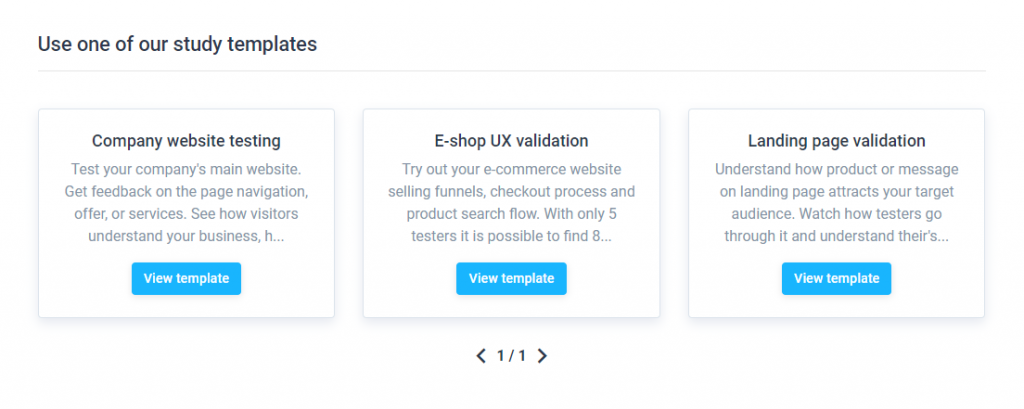5 common user testing myths, that are not true

There are numerous myths and misconceptions surrounding the topic of user testing. Without any knowledge of the industry and how some things are conducted, these myths might scare you away from doing any user testing yourself.
We have taken five of the most popular myths related to user testing and described why there’s only a bit of truth, if any, in them today. Sure, some of these statements might have been true years ago, but as you will see, they have been busted.
#1 User testing is a complex subject to get into
User testing does seem like a very complex subject with many moving parts. And even though it does require a professional to be fully efficient in it, starting your endeavors in user testing has never been easier.
Having never incorporated user testing practices in development, you probably don’t know where to start. From doing research on different test methods to building a good test, recruiting participants, and documenting all the answers and results feels like a lot of work, you want to avoid at first.
Thankfully there are a lot of user testing tools available nowadays to help you along the way and simplify your efforts in user testing. The topic is very accessible, and you don’t need to search for a user researcher or another equivalent professional just to start.
Sharewell has also made it easy for newcomers to hop on board. Usability testing templates are one of the newest helpful additions. Our UX professionals have specially combined a set of scenarios and questions for various website types to help you create tests more easily.

#2 I need a lot of people to get answers from
There’s a myth that user tests need to involve many participants to be useful at all. This is somewhat true, but only for tests that require a lot of testers. This doesn’t describe the whole world of user testing, though. While quantitative tests deal with a larger number of participants to validate product design decisions, masses of people are still a rare occurrence.
Because user testing is part of the design iteration process, new developments are tested often and fast. Only a few participants might be needed to get insight into if something is working as intended. That insight is then taken and put back into the design process. Bouncing the ball back and forth like this doesn’t need a lot of players. The last iteration of a polished design might be something that gets validated by a larger group.
Qualitative tests already involve lesser participants as you want to uncover, for example, usability errors in your design; as few as 5 people can help you go a long way. About 85% of problems related to the user experience can be found with as few as 5 testers.
So no, you don’t need to invite or recruit a lot of people to get results. Starting with only a handful of testers can help you in a direction to start making improvements.
#3 User testing is expensive
User testing shouldn’t be taken as an expense but rather as an investment. Including users and testing practices in your product development phases has many benefits.
What’s the cost of having user errors in the end product? Research says almost half of all development costs deal with later redesigning and problem fixing. What if you could avoid these mistakes altogether and save on development costs? Simply incorporating some user testing practices can save the developers on expenses in the long run.
Using knowledge about user attitudes and behaviors improves your product. Users’ input is significant for designing your product because you’ll know exactly which solutions work and which won’t.
In terms of budgeting, recruiting testers is as expensive as you might think, especially when you put things into context. You invest some development budget for valuable insight from industry professionals, who are essentially your customers. Unmoderated tests are the most cost-efficient option here, but they have their cons as well.
Different budgeting tools will help you here. Something we have added to Sharewell is budgeting suggestions. If you are unsure what to set as the payout, our system offers recommendations based on the number of tasks you have created. The request takes into account past tests also. This is only a suggestion, though; you’ll have the final say in setting the budget.

#4 User testing takes too much time
While developing a new product, it might seem complicated to fit the need for user testing into the schedule. But as we have touched on before, it’s better to do some user testing than none at all.
The biggest time consumer is finding and recruiting suitable testers. Setting up means finding testers, then targeting the group needed, and finalizing everything to conduct the test can take weeks, especially when you have to schedule a suitable time slot and set everything up (from logistical to technical). With building the initial test and documenting all the user test findings, are these spent weeks even worth it?
Fortunately, remote user testing has become more popular lately, as there is no need to find participants for studies conducted physically (especially in our current state). Recruitment has been made more accessible as well. At Sharewell, we have already collected over 10 000 individuals ready to participate in these user tests. The large tester pool consists of testers from all around the world, and all have different backgrounds. With even many restrictions or target selections in place for suitable individuals, we can populate the user test in a couple of days. Here’s a case study from Lingvist for context.
Recruiting testers has become a fast process now. You can find suitable testers in a matter of a day and have the first answers to your questions ready the following day. Test building is also simpler and faster. Templates help you save time on creating and researching the right questions.
#5 User testing is not that beneficial, right not
If not now, then when? There seems to be a misconception about user testing in general: it is something for the future. Yet some businesses use it regularly and yield great results. User testing is a big part of user experience design.
It has been evaluated that user experience is not only a competitive thing anymore but also a survival thing. Reportedly, users tend to come back less to sites with bad user experience, as opposed to websites that have no usability errors. These websites with suitable experience will be recommended by users to their peers and family. We also tested out banking sites’ usability a while back and found out that complex search engines and menus make the user want to leave the page. So making a usable and straightforward product is vital for keeping existing customers.
One misconception also exists that customers won’t reveal new information about the product – we, as members of the company and the product, are already fully aware of everything. But as a superuser of the product, you’re already familiar with the product, possibly knowing every nook and cranny and how to work around them. Maybe not fully realizing that a new user might have troubles here or there. They might even have better solutions to already working parts of your product. There’s always more to discover!
Closing notes
There are many misunderstandings when it comes to user testing. Even though a very complicated subject, it is a powerful tool to use when developing new products. User testing has never been more accessible than right now. You can set up a test in minutes and start recruiting testers quickly. In most cases, you’ll have answers to your questions ready the following day.
Sharewell is here to break these myths and offer a better product instead.


